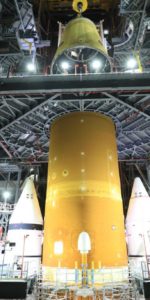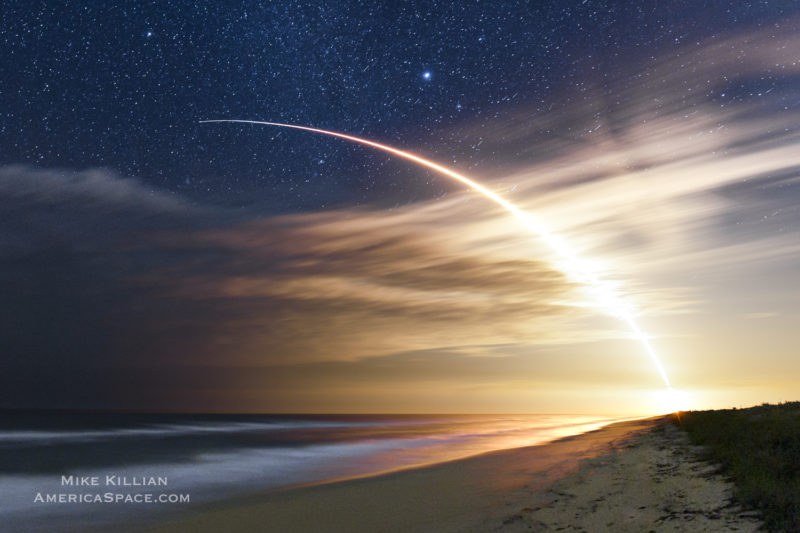
Almost exactly a year since its first trek uphill, a many-times-flown Falcon 9 booster is set to launch again as soon as Friday, laden with SpaceX’s second dedicated rideshare payload, Transporter-2. Following a customary Static Fire Test of its nine Merlin 1D+ first-stage engines on Tuesday, the B1060 core—the fourth Falcon 9 to log an eighth mission—is set to rise from storied Space Launch Complex (SLC)-40 at Cape Canaveral Space Force Station, Fla., during an hour-long “window” which opens at 2:56 p.m. EDT Friday.
It will be the fourth time that SpaceX will have flown as many as four times in a single calendar month. In the meantime, the Space Force’s fifth Block III Global Positioning System (GPS) satellite, launched last week, is expected to complete on-orbit testing later in June.
And although Mother Nature is well-known for her fickleness, the weather forecast even a couple of days out from launch looks favorable. In a Tuesday update at L-3, the 45th Weather Squadron at Patrick Space Force Base indicated a 60-percent chance of acceptable conditions on Friday, with an upward shift to 70 percent in the event of a 24-hour scrub to Saturday. A subtropical ridge axis, situated to the south of Central Florida, is responsible for a higher-than-usual likelihood of inland-moving storms.
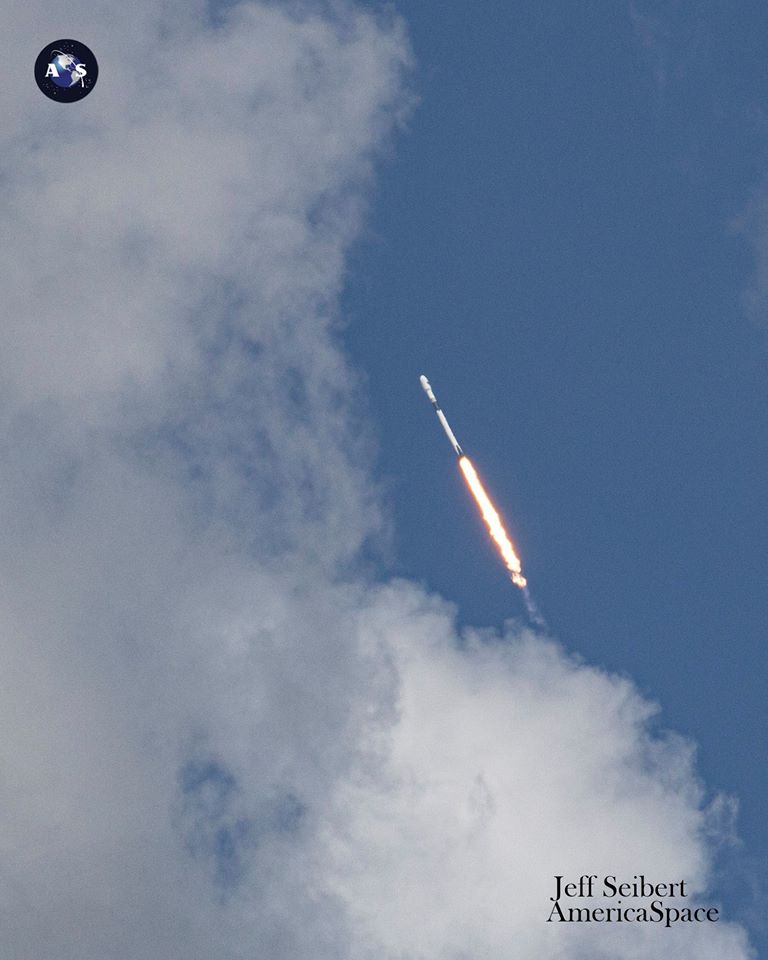
“Elsewhere, a boundary in the Southeast U.S. will gradually erode as the remnants of Tropical Storm Claudette pull northward,” the 45th noted on Tuesday. “As this boundary erodes, the subtropical ridge axis will begin to move north of the Space Coast. There is uncertainty on the timing of this transition, but most of the models have it north of the Spaceport on Friday.” The result: hopefully much less storm coverage as the east coast sea breeze begins to push storms westward. Potential factors for Friday’s opening launch attempt are a violation of the Cumulus Cloud Rule and Thick Layer Cloud Rule.
If the mission flies this weekend, it will mark the third time in 2021—and the fourth occasion overall—that as many as four Falcon 9s have flown inside a single calendar month. Last November, a quartet of flights from the Cape and Vandenberg Space Force Base, Calif., lifted the Space Force’s fourth Block III GPS payload, the Sentinel-6A Michael Freilich ocean-monitoring sentinel, a 60-strong batch of Starlink low-orbiting internet communications satellites and Dragon Resilience with Crew-1 astronauts Mike Hopkins, Victor Glover, Shannon Walker and Soichi Noguchi.
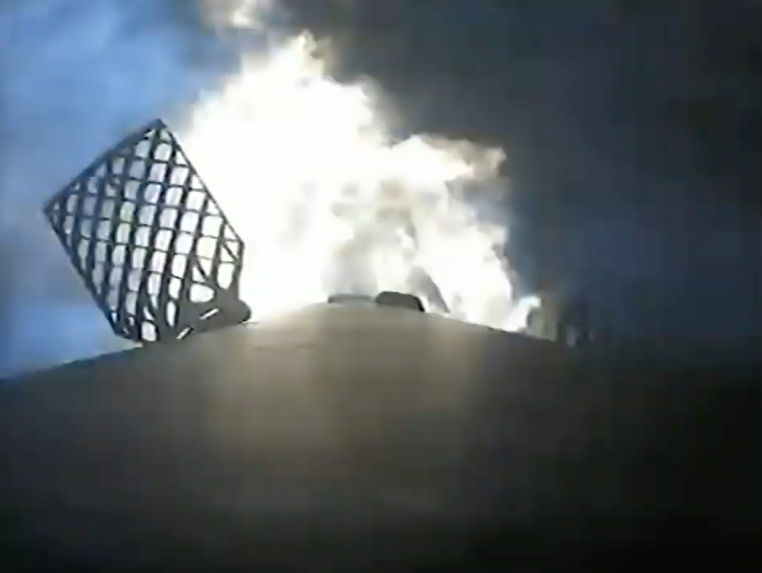
More recently, firstly in March and later in May of this year, another pair of four-mission months were logged. On both occasions, all of the flights originated from the Space Coast, launching from either SLC-40 at Cape Canaveral Space Force Station or historic Pad 39A at the Kennedy Space Center (KSC). As an added sidenote, Friday’s launch marks the first time since June 2020 that three Falcon 9s have flown in a single month from SLC-40.
The booster core earmarked for the Transporter-2 mission is B1060, which first flew last 30 June, almost exactly a year ago, when she provided the muscle to lift the third Block III GPS satellite towards Medium Earth Orbit (MEO), some 12,550 miles (20,200 km) above the planet. Nine weeks later, on 3 September, she launched a second time—cementing a record for the shortest interval between two Falcon 9 flights from the Space Coast—and went on to fly a third mission on 24 October. Both were laden with 60-strong batches of Starlinks. On her third flight, B1060 marked the 100th successful launch of a Falcon-class booster.
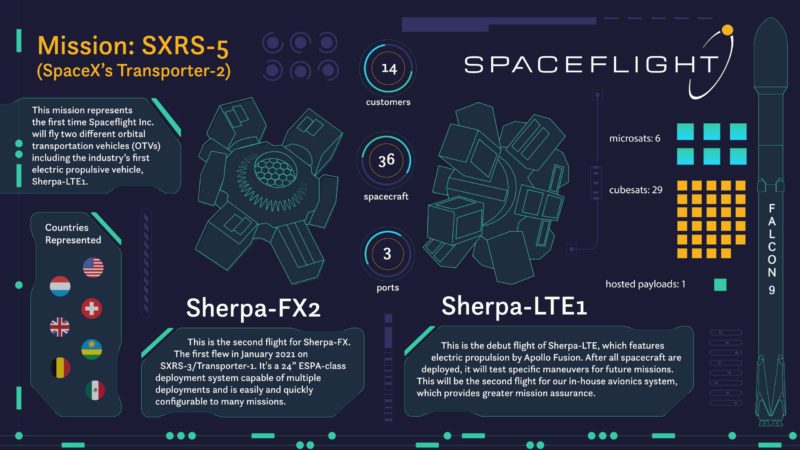
But B1060’s real record-setting credentials have been concentrated into the first half of 2021. She flew SpaceX’s first mission of the year on 7 January with Turkey’s powerful Türksat 5A geostationary communications satellite, then was turned around in only 27 days to fly a Starlink payload uphill on 4 February, in what SpaceX touted as “rapid reusability”. This neatly eclipsed the Falcon 9’s previous launch-to-launch turnaround record of only 38 days, set a few weeks earlier and still stands to this day.
More recently, in late March and late April she lifted another pair of 60-strong Starlink batches to orbit. And on her most recent mission, she became the first Falcon 9 core to launch four times in four consecutive months. All told, B1060 has lifted a grand total of 302 primary payloads to orbit, weighing a combined 189,000 pounds (85,700 kg).
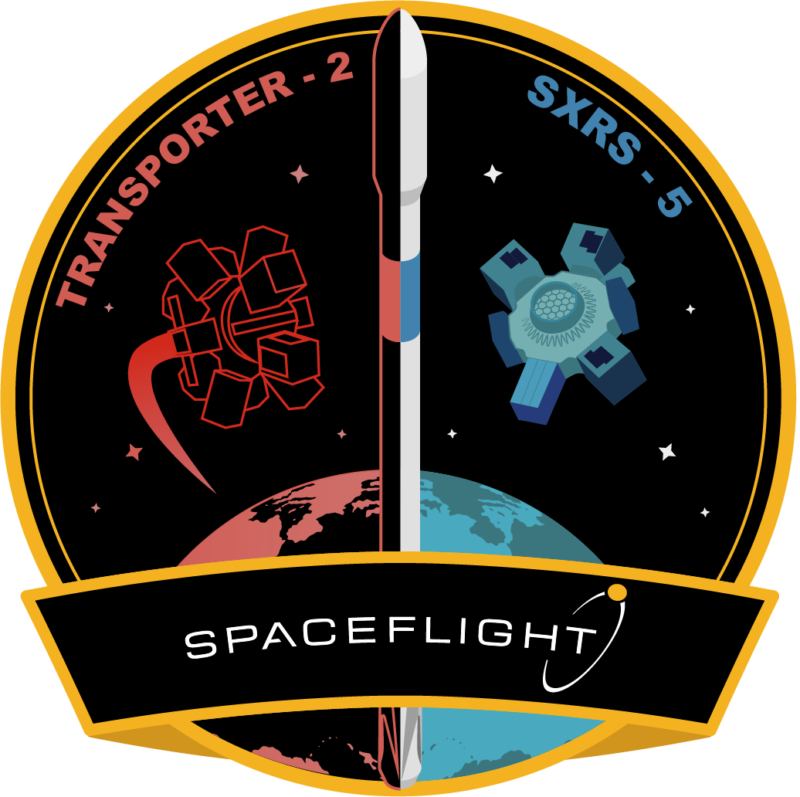
With Friday’s mission, that number will increase dramatically, for like January’s flight of Transporter-1—and its record-breaking tally of 143 discrete payloads on a U.S. orbital launch vehicle—the upcoming Transporter-2 payload is literally jam-packed with satellites.
And in terms of getting an accurate fix on precisely how much is heading uphill on this mission, Transporter flights are earning repute as flights we love to hate. The mission is headed for Sun-synchronous orbit, at an altitude of roughly 340 miles (550 km), with an expectation that B1060 will complete its first Return to Launch Site (RTLS) landing on solid ground at Landing Zone (LZ)-1 at the Cape about eight minutes after liftoff. Each of its seven prior missions terminated with oceanic touchdowns on the Autonomous Spaceport Drone Ship (ASDS), situated offshore in the Atlantic Ocean.
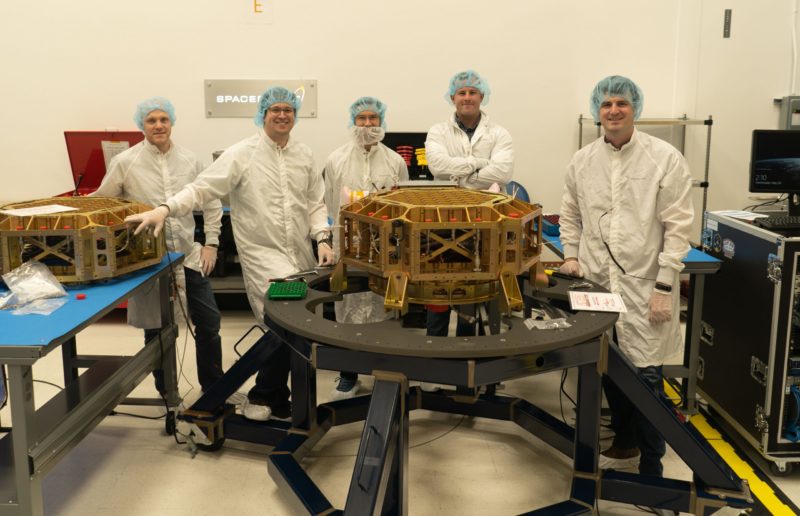
Thirty-six discrete cargoes from 14 organizations and seven nations aboard Transporter-2 have been provided by Spaceflight, Inc., for a mission designated “SpaceX Rideshare-5” (SXRS-5). They include six microsatellites, 29 CubeSats and one “hosted” payload, with objectives spanning a range of disciplines from technology to optical and hyperspectral imaging, from meteorology to maritime monitoring and from X-band Synthetic Aperture Radar (SAR) to real-time live-streaming of the Home Planet from space.
And for the first time, the launch services provider will fly two of its SHERPA commercial satellite dispensers on a single mission. One will be the second flight of SHERPA-FX—officially unveiled last summer and first flown on Transporter-1—which has the functionality to physically separate from the Falcon 9’s second stage with its integrated avionics, before initiating multiple smallsat deployments. The other is the as-yet-unflown SHERPA-LTE, whose xenon-fed electric propulsion will “facilitate efficient maneuvering needed for orbital altitude and inclination changes”.
“With the launch of SHERPA-FX2 and SHERPA-LTE1 on the upcoming SpaceX Transporter-2 mission, we are harnessing the power of our modular design and preparing for future launches,” said Philip Bracken, vice president of engineering at Spaceflight, Inc. “Much like with Lego, we can easily build different variations of SHERPA vehicles for flight in a matter of months, as well as adjust to last-minute manifest changes without impacting the result of the mission.”
Last June, Spaceflight, Inc., and SpaceX signed a Multi-Launch Agreement to secure capacity on “several” Falcon 9 missions, due to launch through late 2021. It was stressed by Spaceflight, Inc. President Curt Blake that the “consistent launch schedule” demonstrated by the SpaceX Falcon 9 fleet would enable the provision of more reliable and less expensive rideshare options for commercial clients.
FOLLOW AmericaSpace on Facebook and Twitter!
Missions » Commercial Space »



